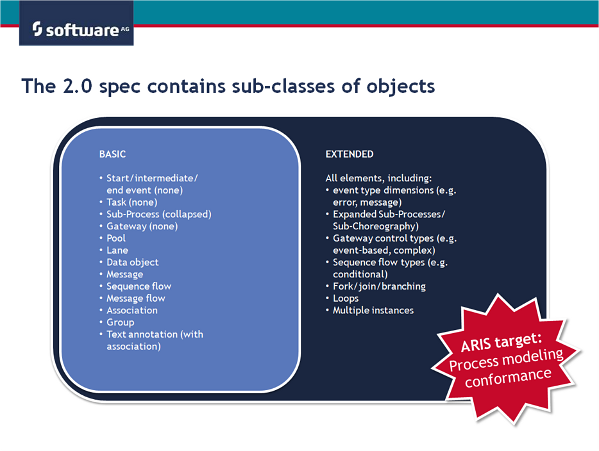Learning BPMN 3 – Which objects are available in BPMN?
The BPMN spec contains way over 100 different object types that can be used in the different model types. There are special rules about how to use them, which I will explain in later lessons. This article contains an overview of the available objects.
BPMN Objects Overview
Depending on your use case and point of view, the amount of available object in the different BPMN models might be a blessing or a course. Most likely business people will shy away from the notation and might see it as “too complex”, while technical folks who want to implement a workflow system might welcome the possibilities to express even complex situations in a (relatively) simple way.
However, there is a thin line – due to the openness of the specification in the object definition, as well as the modeling style that allows to express the same thing in multiple ways – for Enterprise Architects who want to standardize on BPMN for the process layer to walk on, since some mappings are not possible or can be only achieved with workarounds.

(BPMN 2.0 poster created by the BPM Initiative Berlin; downloadable at http://bpmb.de/poster)
While posters like the one above provide a good reference for experienced BPMN users, the usage and combination of objects is not included. In addition to this, the specification clusters the objects in two subclasses to reduce complexity for different modeler groups.

BPMN Objects in the BPMN model types / in ARIS
The following table shows the available BPMN objects in the current ARIS implementation. Please note that the Choreography diagram is not implemented as of ARIS 7.1 SR9 and therefore some object types are missing. Since this is a new model type, the majority of existing users might not miss this at all and use the more commonly used BPMN Process and Collaboration diagrams.
Please have a look at this page that holds the table of content of the “Learning BPMN” series here at ARIS Community.
Notes
- Some of the objects are also used in the 1.x BPMN implementation. The table above only reflects the 2.0 implementation – e.g. a pool can be used in a 1.x BPMN process model but not in a 2.0 process model.
- Sub-classes graphic updated on 3/11/11.
Cross-posted from ARIS Community: https://www.ariscommunity.com/users/roland-woldt/2011-03-08-learning-bpmn-lesson-3-which-objects-are-bpmn
Roland Woldt is a well-rounded executive with 25+ years of Business Transformation consulting and software development/system implementation experience, in addition to leadership positions within the German Armed Forces (11 years).
He has worked as Team Lead, Engagement/Program Manager, and Enterprise/Solution Architect for many projects. Within these projects, he was responsible for the full project life cycle, from shaping a solution and selling it, to setting up a methodological approach through design, implementation, and testing, up to the rollout of solutions.
In addition to this, Roland has managed consulting offerings during their lifecycle from the definition, delivery to update, and had revenue responsibility for them.
Roland has had many roles: VP of Global Consulting at iGrafx, Head of Software AG’s Global Process Mining CoE, Director in KPMG’s Advisory (running the EA offering for the US firm), and other leadership positions at Software AG/IDS Scheer and Accenture. Before that, he served as an active-duty and reserve officer in the German Armed Forces.













